Recent changes to the Australian Standard (AS 4187) means that green plastic trays are no longer suitable for hospitals. It is in the CSSD where changes can be made to ensure safer practices and one of these is upgrading to mesh trays.
This is your guide to purchasing NEUREIN® mesh trays and baskets.
A change in standard
AS 4187 has placed an increased focus on validating each stage of the sterilisation process. The standard outlines that all trays used should allow penetration of the sterilising agent. Trays should also be packaged securely with all openings facing the same direction, be separated to enable proper serialisation, and be positioned to allow for adequate air removal, drying, and sterilisation.
This means that for many hospitals to conform with the standard, plastic trays are no longer suitable and stainless-steel sterilisation trays with open sides are required.
Mesh trays
NEUREIN® mesh trays are designed to hold surgical instruments, scopes, screws, and other surgical equipment and the open sides allow all surfaces to be reached during the cleaning process. Each tray is made from high-quality stainless steel (material grade AISI-304 18/8) which will withstand the repeated cycles of cleaning and sterilisation.
There are a number of factors to consider when choosing your tray.
Sizing
Each facility has different size requirements for its trays and baskets, depending on the combination of instruments and accessories that need processing. That is why, in addition to DIN sizing, the NEUREIN® range is available in custom sizes to cater for any specific requirements. Custom trays can be ordered in low volumes and manufactured within a relatively short time frame.
Sides
The sides of the baskets can be made from perforated metal or wire mesh.
Trays with perforated metal sides are stronger and more durable, and are recommended for full-cycle use. These trays are the more common type and are available in a large range of sizes and configurations.
Trays (or wash baskets) with wire mesh sides are cheaper to buy, however, they are less durable and generally only used for some processes of the cycle. In addition, there are fewer standard sizes available compared to perforated metal trays.
Bases
The base of your mesh tray can be woven or flat.
A woven mesh base provides more structural integrity and is more durable. This base is more suitable for silicone inserts, as lugs hold better. However, this base sits higher within the frame, which results in a small percentage of lost volume in the tray.
Trays with a flat mesh base are not as strong. They do, however, sit flat, which means there is no loss of volume. Some within the industry also say these dry better.
Size of Mesh
Wire Mesh is available in several different sizes.
The standard mesh sizing of 4-5mm spacing is both cost-effective and ideal for normal instruments.
A range of micro-mesh sizing with 1-3mm spacing is also available. This is ideal for spare parts, delicate and disassembled instruments. These are generally supplied with a fixed hinge or removable lid and are available in a ranger of smaller tray sizes. These can be placed within a large tray if required.
Optional Additions
Handles and lids are both optional elements of the tray. The addition of handles is a personal and professional preference but not necessary. Lids should be purchased at the same time as the tray to ensure perfect fit. These can be fixed via hinge or removable. Various mechanisms are used to lock the lid in place, and depending on the design, can add a considerable cost to the overall tray.
Accessories
Inserts are available to assist with holding and protecting instruments during the wash and transportation cycle. Some of these are fixed with screws, which provide a stronger, more permanent design, however, there is the risk of the screws causing damage. Other inserts have silicone lugs, which are easier to attach to the mesh base, however, these aren’t as strong.
A large range of silicone pin mats is also available. These ensure there is no movement during the sterilisation and cleaning process and can be inserted into any design of the tray or basket. Note that these can cause issues with drying and need to have adequate holes and spaces for ventilation.
Other accessories, including corner protectors, tray liners, tray tags, and identification systems, are also available for purchase with mesh trays, and can greatly assist with efficiency in the CSSD.
Ordering
The process of upgrading your plastic trays to stainless steel trays can be a daunting project. Contact your Account Manager at Elite Medical for more information on the NEUREIN® range of mesh baskets, trays, accessories, and how we can provide a solution that suits your exact requirements and budget.

